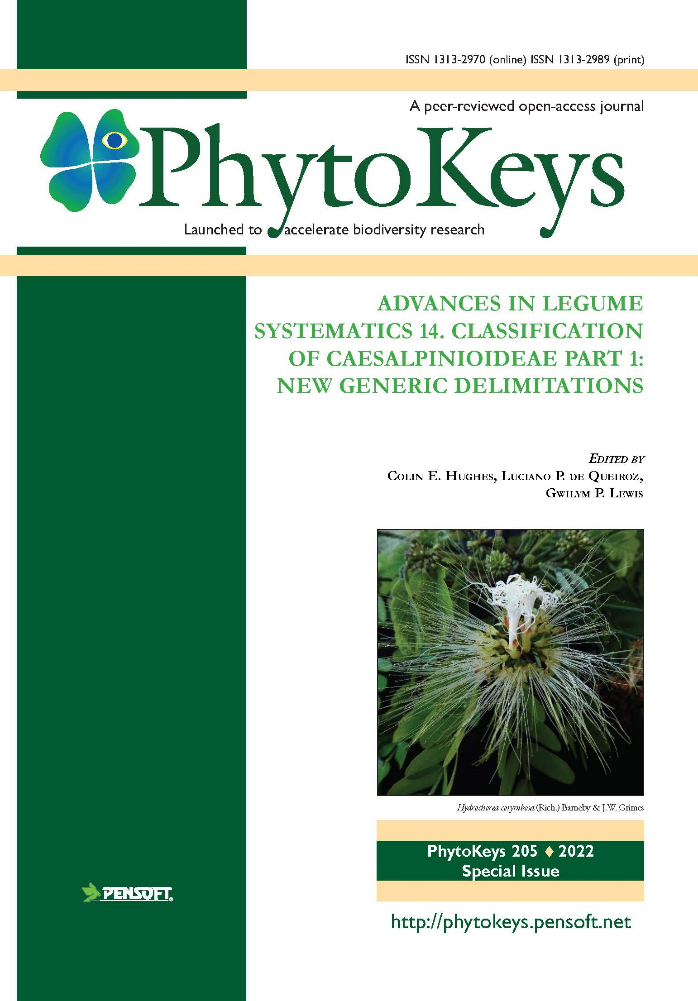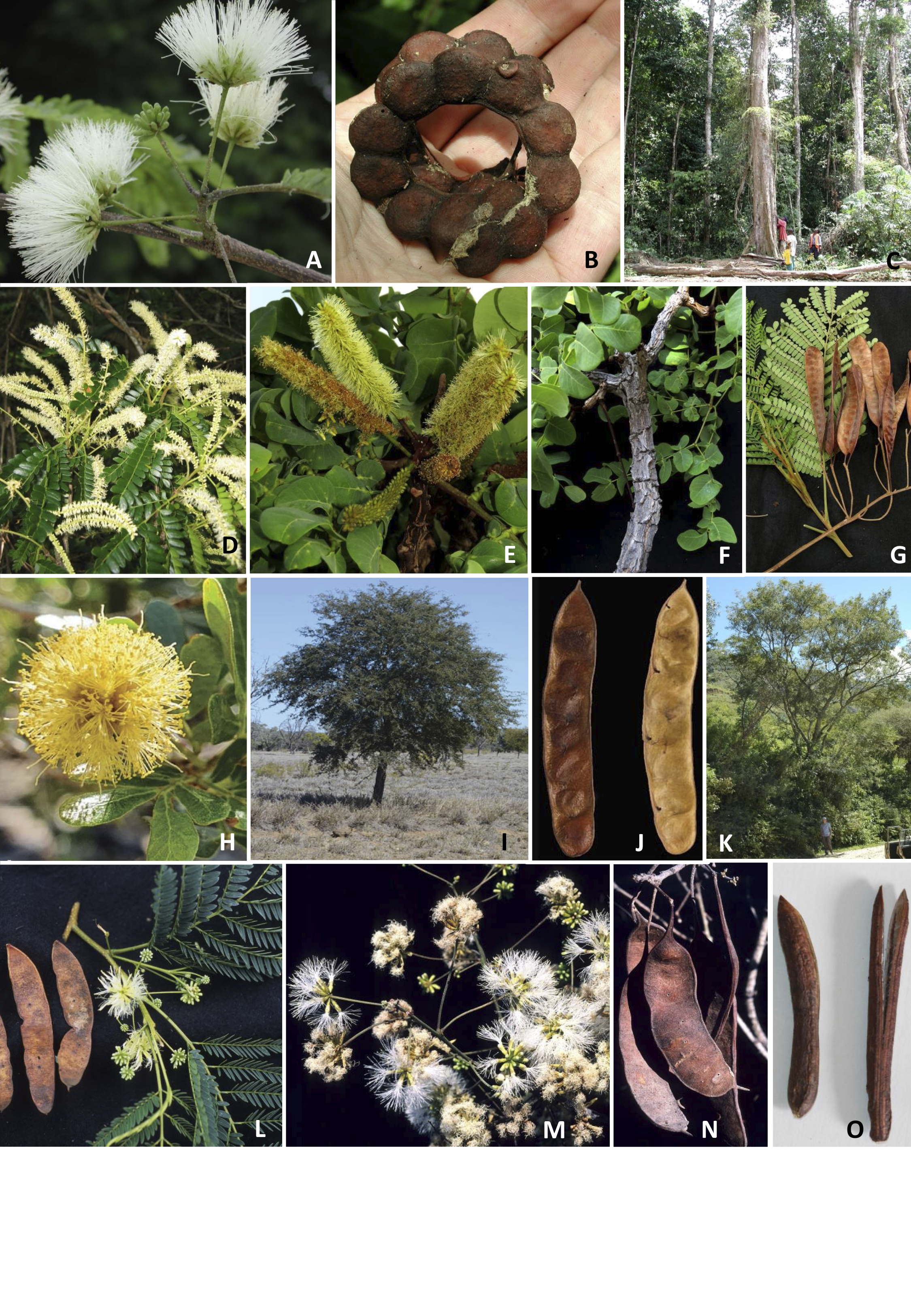ADVANCES IN LEGUME SYSTEMATICS 14
Classification of Caesalpinioideae. Part 1 – New Generic Delimitations
Colin Hughes (University of Zürich, Switzerland)
Luciano P. de Queiroz (Universidade Estadual de Feira de Santana, Brazil)
Gwilym P. Lewis (Royal Botanic Gardens, Kew, UK)
Advances in Legume Systematics (ALS) 14 Part 1, edited by Colin E. Hughes, Luciano P. de Queiroz and Gwilym P. Lewis, was published during 2022 as a Special Issue of the journal PhytoKeys (https://phytokeys.pensoft.net/issue/3247/). It includes 16 papers, involving 54 authors from 13 countries and is focused on generic delimitation across subfamily Caesalpinioideae which includes the mimosoid clade (former subfamily Mimosoideae). Phylogenomic analyses presented in the introductory paper show that 22 of the 152 genera previously recognized in Caesalpinioideae are non-monophyletic or nested within another genus. The papers in ALS14 address this extensive non-monophyly, reclassifying 15 of these 22 genera. Nine new genera are described (Boliviadendron, Gretheria, Gwilymia, Heliodendron, Marlimorimia, Mezcala, Naiadendron, Osodendron, Ricoa), five genera are reinstated (Anonychium, Neltuma, Pseudalbizzia, Strombocarpa, Ticanto), and three genera are subsumed into synonymy of other genera (Balizia, Elephantorrhiza, Pseudopiptadenia), bringing the number of Caesalpinioideae genera to 163. In total, 139 new name combinations are proposed. These generic re-circumscriptions include splitting of the large pantropical genus Albizia (the last ‘dustbin’ genus of mimosoid legumes) and the amphi-Atlantic Prosopis, one of the most important silvopastoral tree genera of tropical drylands. Conversely the genus Hydrochorea, previously restricted to the New World, is re-circumscribed with an amphi-Atlantic distribution to include Balizia as well as two species from west Africa formerly placed in Albizia.

Four of the genera newly described in this Special Issue are named after prominent contemporary legume taxonomists, three women and one man: Gretheria for Rosaura Grether, a Mexican specialist on the genus Mimosa, Ricoa for Lourdes Rico, another Mexican botanist who worked on mimosoid legumes based at Kew, Marlimorimia, in honour of Marli Pires Morim of the Jardim Botânico do Rio de Janeiro, Brazil in recognition of her contributions to the taxonomy of mimosoid legumes, and Gwilymia named for Gwilym Lewis, in honour of one of the world’s most experienced and productive legume taxonomists who is legume research leader in the Herbarium at the Royal Botanic Gardens, Kew.
These taxonomic changes fundamentally re-shape the generic classification of Caesalpinioideae and lay foundations for a new higher-level classification of the subfamily which is in preparation and will be published as ALS14 Part 2 in 2023.
 New genera described in ALS14 Part 1: A – C Osodendron; D Marlimorimia; E – F Gwilymia; G Naiadendron; H – J Heliodendron; K – L Boliviadendron; M – N Gretheria; O Mezcala. Photos: A – C William D. Hawthorne, D Luciano P. de Queiroz, E – G Marcelo F. Simon, H Stuart Worboys, I BRI AQ0234095, J Murray Fagg, Australia Plant Image Index, K – N Colin E. Hughes, O José Luis Contreras Jiménez.
New genera described in ALS14 Part 1: A – C Osodendron; D Marlimorimia; E – F Gwilymia; G Naiadendron; H – J Heliodendron; K – L Boliviadendron; M – N Gretheria; O Mezcala. Photos: A – C William D. Hawthorne, D Luciano P. de Queiroz, E – G Marcelo F. Simon, H Stuart Worboys, I BRI AQ0234095, J Murray Fagg, Australia Plant Image Index, K – N Colin E. Hughes, O José Luis Contreras Jiménez.